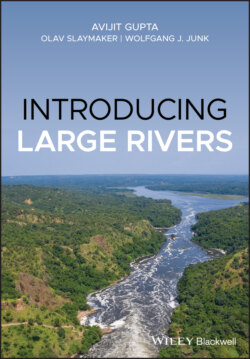Читать книгу Introducing Large Rivers - Avijit Gupta - Страница 34
4.3.1 The Setting
ОглавлениеThe approximately 6000 km long Amazon and its tributaries drain a river basin of about 7 million km2 (Figure 4.4). Its headwaters originate in the folded mountain belt of the Andes in the west and its present east-flowing course post-dates the Miocene uplift of the ranges. Descending from the Andes, the Amazon crosses a downwarped foreland basin, and then a vast lowland, before passing between two cratonic highlands (Guyana Shield to the north and Brazil Shield to the south) to reach the low trailing eastern coast of South America on the Atlantic Ocean (Figures 4.4 and 4.5). Plate tectonics control the location and lithologic and topographic frameworks of the Amazon (Potter 1978). The basin was delineated following the Miocene uplift of the tectonically and volcanically active Andes due to the subduction of the Nazca Plate below the South American Plate. Exploration for petroleum has revealed the underlying structure along the channel and floodplain of the Andes (Mertes and Dunne 2007). Evidence from deep cores indicates an east–west crustal sag underneath the basin axis at a depth of 6000 m that links with a graben, the Marajó Rift, roughly located underneath the mouth of the river. It is a very large river with low gradient and limited power (Baker and Costa 1987), even at the average peak discharge (12 W m−2), which generally carries a huge amount of sediment, but finer than about 0.5 mm.
